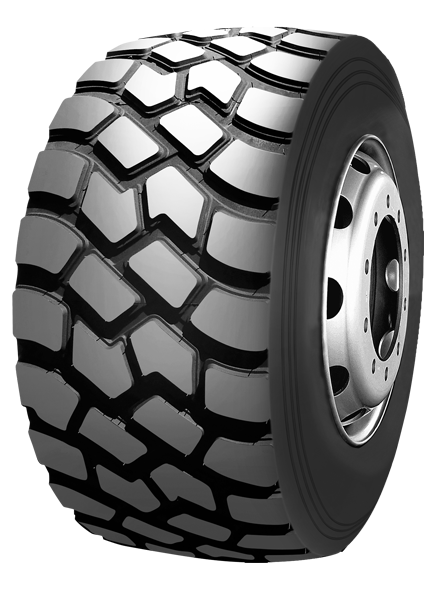> News > Company News > Agricultural Tyre: The Foundation of Modern Farming Efficiency
Company News
In the evolving world of modern agriculture, where productivity and precision define success, the Agricultural Tyre stands as one of the most critical components connecting high-performance machinery to the land. Far beyond being a simple wheel covering, today’s agricultural tyre is a sophisticated engineering product—designed to handle heavy loads, improve traction, protect soil health, and enhance overall fuel efficiency.
As farming moves toward greater mechanization, sustainability, and smart technology, the right agricultural tyre can make a measurable difference in field performance, equipment longevity, and operational cost.
An Agricultural Tyre is a specialized tire engineered for tractors, harvesters, sprayers, trailers, and other agricultural machinery. Unlike conventional vehicle tires, agricultural tyres are designed to operate under variable field conditions—soft soil, mud, gravel, or uneven terrain—while maintaining strong traction and minimal soil compaction.
These tyres combine advanced tread design, sidewall flexibility, and reinforced carcass construction to provide optimal grip, durability, and comfort across various types of agricultural work. Whether ploughing, seeding, or harvesting, they ensure that every operation is stable, efficient, and safe.

1. Superior Traction and Grip
Agricultural tyres feature deep and wide lugs that penetrate the soil to provide excellent traction. This prevents slippage and ensures the machinery operates efficiently even in wet or soft ground conditions.
2. Optimized Tread Patterns
Depending on the application, tyres are designed with specific tread layouts—such as R-1 for general farming, R-2 for wet fields, and R-4 for industrial-agricultural use. Each pattern is optimized to balance grip, self-cleaning ability, and wear resistance.
3. Soil Protection and Reduced Compaction
Modern tyres incorporate flexible sidewalls and larger contact areas, distributing weight evenly to protect soil structure. Lower compaction promotes better crop root growth and soil aeration, ultimately improving yield quality.
4. Reinforced Construction
Agricultural tyres are built with multiple layers of high-strength nylon, steel belts, or radial plies to resist punctures, impacts, and deformation. This rugged construction ensures longevity and stable performance in demanding environments.
5. Comfort and Stability
The advanced rubber compounds and balanced design reduce vibration and noise during operation, allowing smoother rides and less strain on machinery and operators.
Tractors:
Tractor tyres are the most versatile and commonly used type. They provide strong traction for tillage, ploughing, and transportation tasks while maintaining efficiency on both field and road surfaces.
Harvesters and Combines:
These tyres are engineered for heavy loads and consistent traction during harvesting seasons. Their wide profiles distribute weight evenly, minimizing soil rutting and crop damage.
Sprayers and Fertilizer Spreaders:
Tyres for sprayers require excellent flotation and minimal soil disturbance. They are designed to carry high loads at low inflation pressures, ensuring stability even on uneven terrain.
Agricultural Trailers and Implements:
Trailer tyres must combine strong load-bearing capacity with durability. They are designed for both on-road and off-road performance, resisting wear caused by long-distance transportation and field debris.
The benefits of investing in premium agricultural tyres go beyond improved mobility—they influence every aspect of farming efficiency.
1. Enhanced Productivity
Better traction means less slippage, reduced fuel consumption, and faster field operations. Farmers can cover more ground with lower operational costs.
2. Lower Soil Damage
With modern low-pressure and radial designs, tyres minimize soil compaction, allowing plants to absorb nutrients and water more effectively. This leads to healthier crops and sustainable farming.
3. Extended Tyre Lifespan
High-quality compounds resist wear and cracking under extreme sunlight, moisture, and chemical exposure. Properly maintained tyres can serve for multiple seasons without performance decline.
4. Improved Fuel Efficiency
Reduced rolling resistance directly lowers fuel use, making modern tyres both cost-effective and environmentally friendly.
5. Versatility and Adaptability
Agricultural tyres are available for all conditions—from soft paddy fields to dry, rocky farmlands—ensuring performance consistency across every season and terrain type.
Radial agricultural tyres are built with flexible sidewalls and steel belts that provide excellent ground contact and longer life. They are ideal for heavy-duty field operations where soil protection and comfort are top priorities.
Bias tyres, on the other hand, feature diagonal ply construction, offering superior strength and resistance to sidewall damage. They are preferred in rugged terrains and applications that demand durability over flexibility.
The right choice depends on specific farming needs, terrain type, and load requirements. Many modern farms adopt a mixed approach—using radial tyres on main tractors for fieldwork and bias tyres on auxiliary equipment for rough handling tasks.
The agricultural tyre sector is evolving rapidly with advancements in material technology and sustainability. Leading manufacturers are focusing on:
Smart tyre systems that monitor pressure, temperature, and load in real time.
Eco-friendly rubber compounds with lower rolling resistance and recyclable materials.
Increased flotation technology to protect soil while maximizing traction.
Hybrid tread patterns that perform efficiently on both field and highway conditions.
These innovations are redefining agricultural efficiency, supporting farmers with data-driven insights and long-term cost savings.
Proper maintenance plays a critical role in maximizing tyre lifespan and ensuring safety. Farmers should regularly check inflation pressure, clean debris from treads, rotate tyres periodically, and inspect for cuts or cracks. Underinflated tyres increase fuel use and wear unevenly, while overinflated ones may cause soil damage and poor traction.
Adopting a preventive maintenance routine ensures consistent performance throughout the farming season and reduces the risk of costly downtime.
The Agricultural Tyre is not just a component of machinery—it is a vital link between technology and the land. As farming continues to modernize, the role of high-performance tyres becomes increasingly significant in achieving efficiency, sustainability, and profitability.
By selecting the right tyre type, maintaining optimal inflation, and partnering with reliable manufacturers, farmers can ensure that every rotation of their wheels contributes to better yields, lower costs, and a healthier planet.
In the field of modern agriculture, performance starts from the ground up—and the agricultural tyre remains the foundation of every successful harvest.